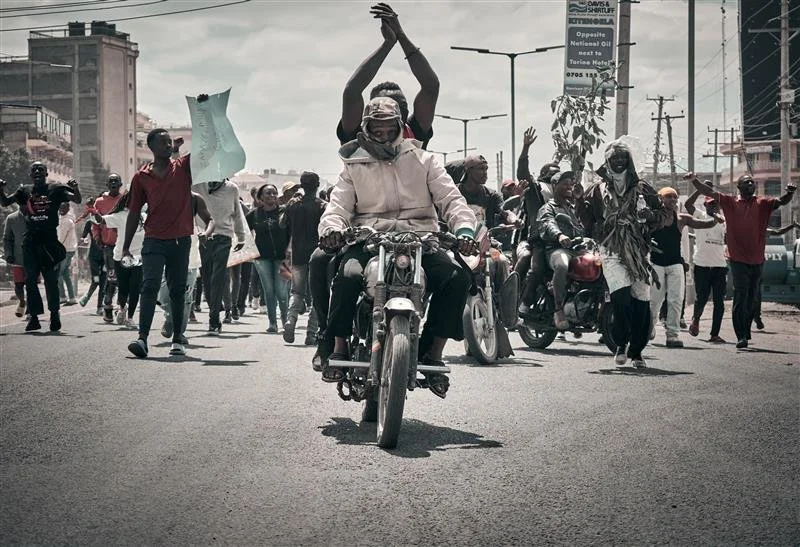Kenyan Protests Explained
The death in police custody of a prominent Kenyan anti-government blogger last month has triggered a latest round of youth-led protests across the country, leaving dozens dead and hundreds more injured at the hands of security forces. Initially sparked last year by proposed tax increases, and reignited in June 2025 by complaints of police brutality, the protests have grown into a wider expression of political and economic disaffection across the country.
Death of Albert Ojwang as a Catalyst
On 9 June 2025, protests swept through Kenya following the death in police custody of Albert Ojwang, a prominent local political blogger known for his outspoken criticism of the government and security services. In Nairobi, at least 30 people were killed and hundreds more injured after thousands took to the streets in anger following his killing.
Ojwang was arrested on 6 June for criticising deputy Kenyan police chief, Eliud Lagat, on social media. He had accused Lagat of corruption, alleging he trusted officers in police departments to “control both revenue streams and intelligence flow” throughout the country.
Two days after his arrest, police announced that Ojwang had died in a Nairobi police cell from self-inflicted injuries after repeatedly hitting his head against his cell wall. Subsequent autopsies, however, suggested the injuries were unlikely to have been self-inflicted, and were instead consistent with assault. Facing popular pressure, Kenyan president William Ruto admitted that Ojwang had died “at the hands of police”, and placed Lagat on leave pending an investigation.
These efforts were insufficient to mitigate rising anger at Ojwang’s death and what is seen as unchecked police brutality and impunity. Kenyan human rights activists have documented a total of 159 extrajudicial killings and enforced disappearances in 2024 at the hands of the police and security services, according to the country’s human rights watchdog.
Background to the Protests
Although initially triggered by Ojwang’s death, the latest protests are underpinned by wider political and economic disaffection across the country. The protests also mark one year since anti-tax demonstrations in June 2024 turned violent, leaving dozens dead, the Kenyan parliament ablaze, and sparking nationwide outrage.
Similarly triggered by a single inflammatory issue – a controversial piece of proposed tax hike legislation – the 2024 protest movement ignited a tinderbox, quickly growing into a broader campaign against the Kenyan government, alongside demands of accountable governance and solutions to the cost-of-living crisis.
Developments Since July 2025
On 7 July 2025, less than one month after Ojwang’s death, a fresh wave of protests swept across the capital, as protestors took to the streets in Nairobi to commemorate the 35th anniversary of pro-democracy protests which helped transform the country into one of sub-Saharan Africa’s most vibrant and complex democracies.
The 7 July protests – known as “Saba Saba”, Swahili for “seven seven”, owing to the date they take place – happen every year. This year, however, the gatherings broadened into a wider anti-government movement, with demonstrators protesting police brutality, government corruption, and economic hardship, and calling for the resignation of President Ruto. In a dangerous escalation in rhetoric, Ruto called for police to “shoot protesters in the legs”, hardening the resolve of both police and protestors.
Impact for Foreign Investors
Kenya remains a strong commercial prospect for investors, particularly in sectors like agriculture, technology, and infrastructure, as well as a regional trade hub with a growing middle class and a dynamic business environment.
Nonetheless, the protests have had a chilling effect on the economy: supply chain blockages, vandalism, looting, and road closures shut down large swaths of the country, while the Nairobi Securities Exchange saw a KSH 63 billion (approx. USD 500 million) loss over a two-week period during the 2024 protests. Moreover, the authorities’ brutal response to the protests represents a worrying tightening of the Kenyan civil and democratic space.
While it remains too early to tell whether the current wave of protests will escalate, international and regional investors should be vigilant to the risks to doing business in Kenya in the current climate. Political, financial crime and other integrity concerns remain major features of the local operating environment – where the intersection between politics and business is plagued by networks of patronage and corruption.
Despite the ongoing state crackdown, opposition politicians, journalists and other civil society groups are likely to double down on their scrutiny of the Kenyan government and businesses seen to be close to the Ruto administration. Any growth in the protest movement and related violence is also likely to increase the attention of the global community.
Investors in Kenya and foreign companies working from abroad with local counterparts, should ensure their compliance and monitoring frameworks are up-to-date and fit for purpose. Kenyan businesses that may well have passed muster before, may find themselves under increased media scrutiny with hidden claims of corruption and impropriety finding their way into the public domain. Likewise, those with a robust early warning system for triggers for future protests and a playbook for how to react will be best placed to safeguard their local assets from security threats.

